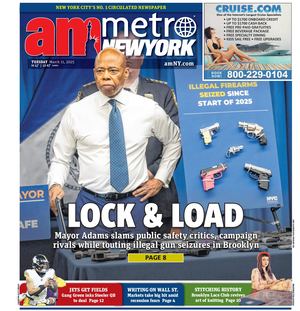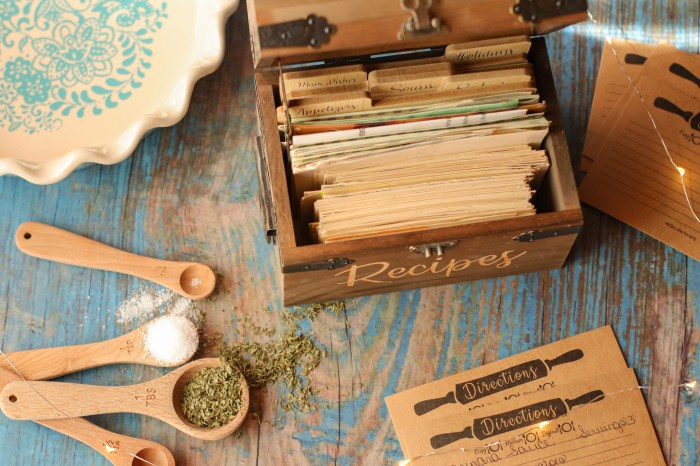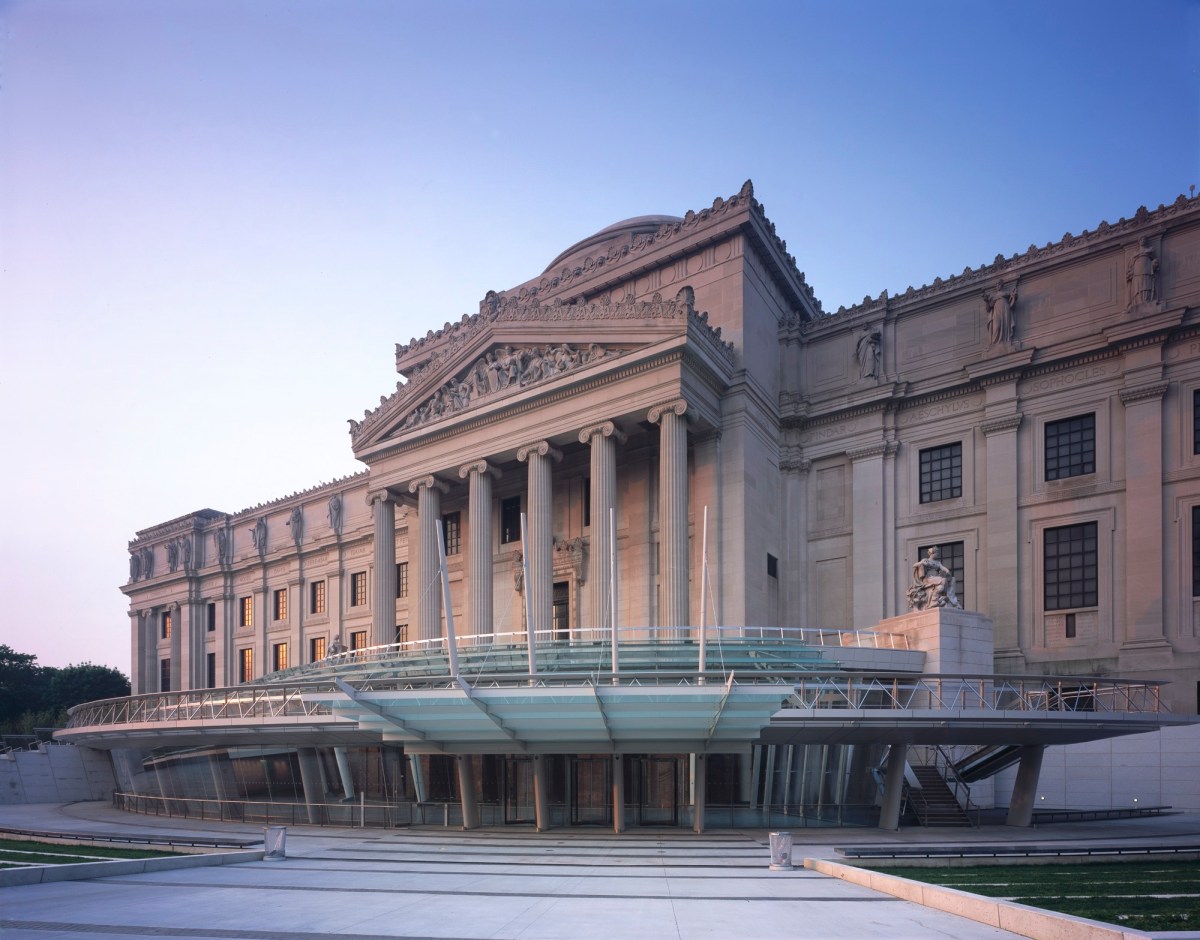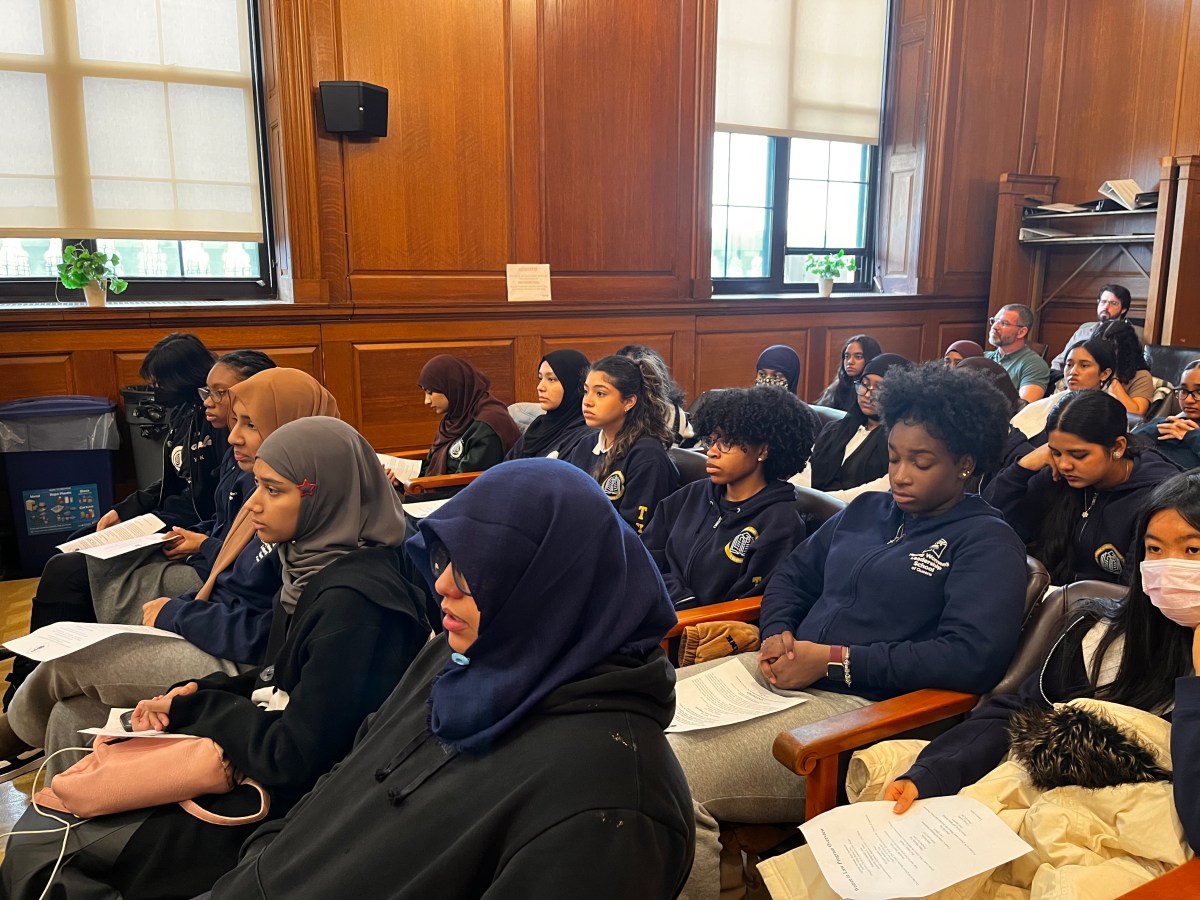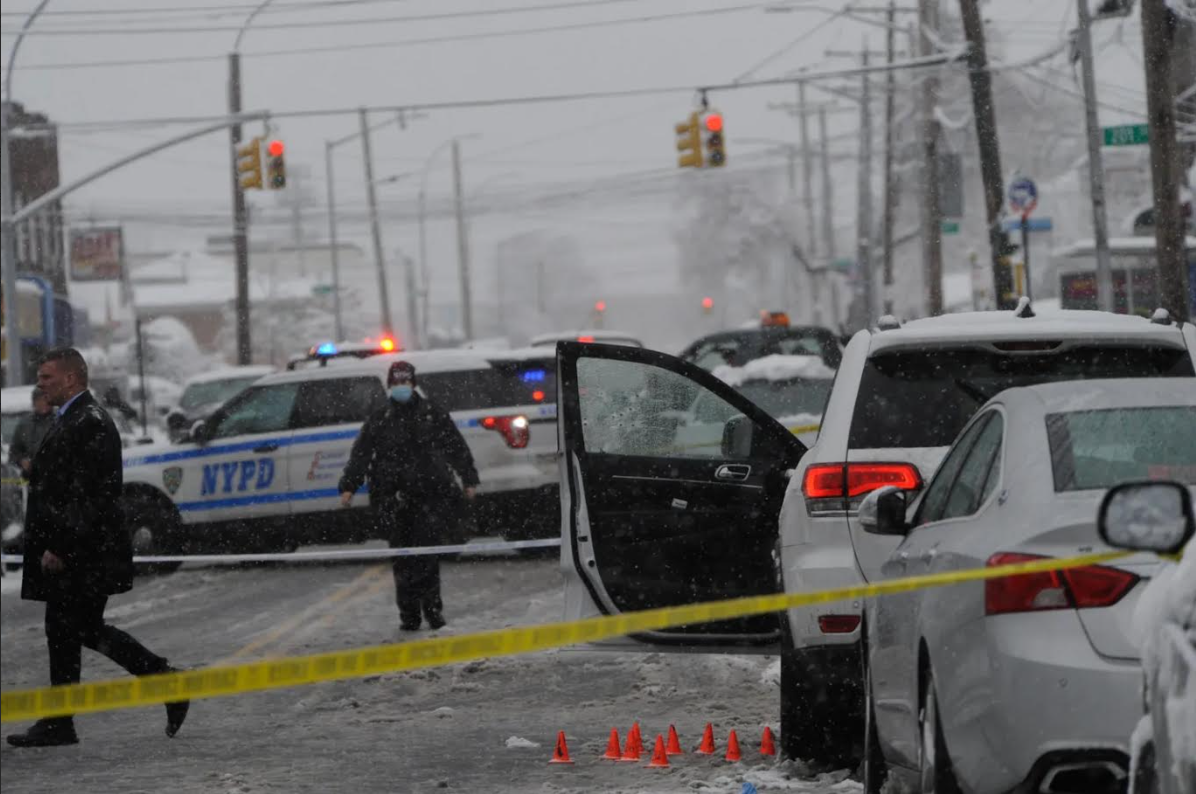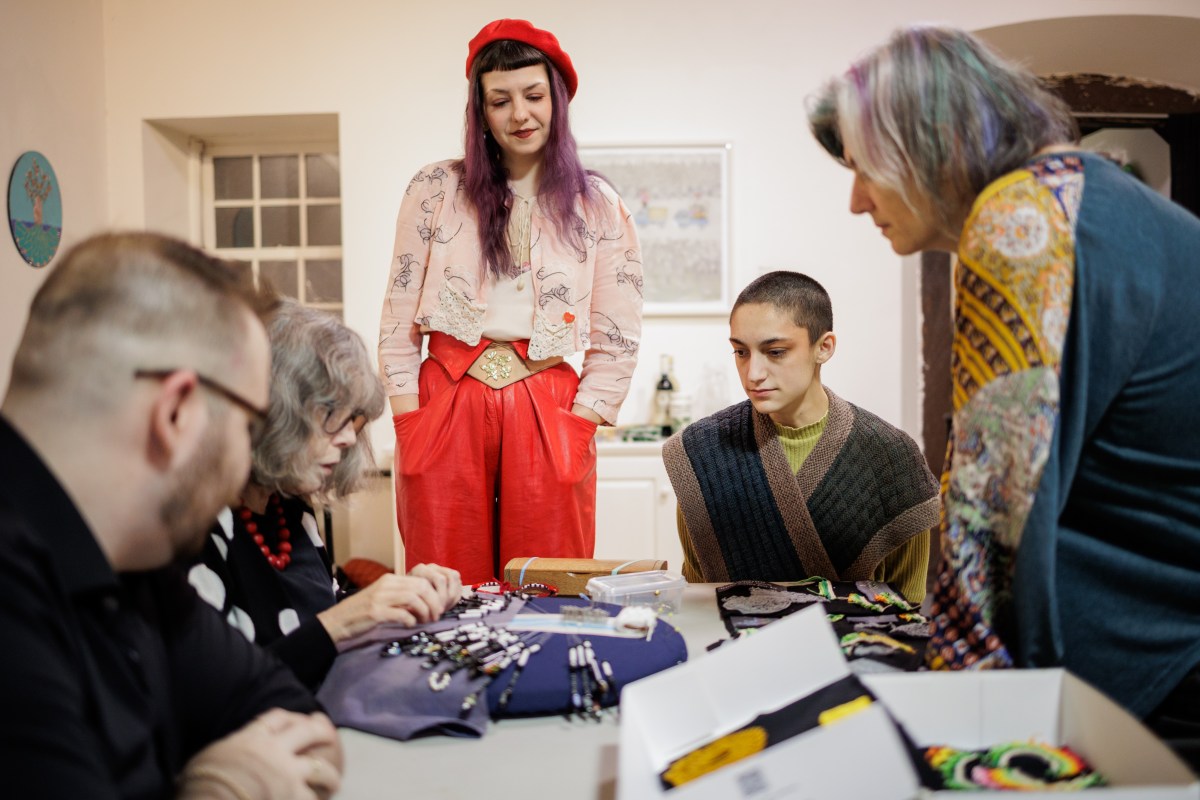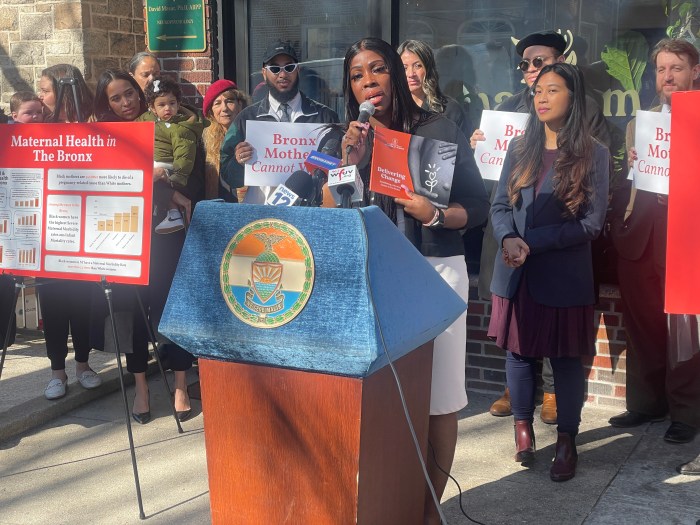-
 Fresh Salt
Fresh Salt146 Beekman St.
A bar and cafe offering pita melts and quiches of the day, plus a happy hour and a weekend brunch.
Il Brigante
214 Front St.
Enjoy southern Italian cuisine, including more than 10 pasta dishes, spicy salami and desserts like tiramisu.
The Paris Cafe
119 South St.
Open since 1873, this Seaport staple serves modern American dishes in a rustic environment.
” data-id=”112224368″ data-link=”https://amnewyork.wpengine.com/wp-content/uploads/2019/10/8629_image.jpg” class=”wp-image-1.12224368″/>Photo Credit: Anthony Lanzilote -
 Cowgirl Sea-Horse
Cowgirl Sea-Horse
259 Front St.
Come for the oysters and trivia on Wednesdays or the live music on Mondays at this nautical watering hole.
Jeremy’s Ale House
228 Front St.
This quirky bar features bras hanging from the ceiling, along with an extensive list of 32-ounce draft beers, ales, porters and more.
The Beekman Pub
15 Beekman St.
An Irish pub that first opened in 1936 and offers daily drink specials, including $5 wine during happy hour.
” data-id=”112224372″ data-link=”https://amnewyork.wpengine.com/wp-content/uploads/2019/10/8630_image.jpg” class=”wp-image-1.12224372″/>Photo Credit: Anthony Lanzilote -
 Gilded Age
Gilded Age224 Front St.
A luxury brand featuring casual outerwear, denim clothing and sports attire.
The Salty Paw
38 Peck Slip
Bring your furry friends to this pet boutique and grooming spa.
Whisper Editions
8 Fulton St.
Stunning works of art, along with furniture, clothes, photography and jewelry crafted by local artists and designers, are for sale at this modern gallery.
” data-id=”112224370″ data-link=”https://amnewyork.wpengine.com/wp-content/uploads/2016/08/image-42.jpg” class=”wp-image-1.12224370″/>
Photo Credit: Anthony Lanzilote -
 South Street Seaport Museum
South Street Seaport Museum
12 Fulton St.
Learn all about the history of South Street Seaport through interactive exhibits, walking tours and hands-on workshops.
Imagination Playground
John Street between Front and South streets
A kids’ heaven that includes giant foam blocks, wagons and other creative playthings.
Warrior Bridge
275 Water St.
Exercise your mind and body through tai chi, aikido, jiu-jitsu, yoga and meditation classes at this studio located under the Brooklyn Bridge.
” data-id=”112224308″ data-link=”https://amnewyork.wpengine.com/wp-content/uploads/2019/10/8631_image.jpg” class=”wp-image-1.12224308″/>Photo Credit: Anthony Lanzilote -
 Trains:
Trains:2, 3, 4, 5, A, C, J or Z to Fulton Street
Buses:
M15, M22, QM11, QM25, BM1, BM2, BM3, BM4
Ferry:
New York Water Taxi at Pier 16
” data-id=”112224366″ data-link=”https://amnewyork.wpengine.com/wp-content/uploads/2019/10/8632_image.jpg” class=”wp-image-1.12224366″/>Photo Credit: Anthony Lanzilote -
 Median sales price: $1,067,081
Median sales price: $1,067,081
Number of units on market: 174
Median rental price: $3,738
Number of rentals on market: 1,055
(Source: StreetEasy)
” data-id=”112224309″ data-link=”https://amnewyork.wpengine.com/wp-content/uploads/2019/10/8633_image.jpg” class=”wp-image-1.12224309″/>
Photo Credit: Anthony Lanzilote -
 The South Street Seaport was built in the early 1800s as a center for commercialism and shipping. The seaport was home to the Fulton Fish Market, which opened in 1822 and moved to Hunts Point in the Bronx in 2005. By the 1980s, the South Street Seaport transformed into a major shopping destination and tourist attraction.” data-id=”112224432″ data-link=”https://amnewyork.wpengine.com/wp-content/uploads/2019/10/8634_image.jpg” class=”wp-image-1.12224432″/>
The South Street Seaport was built in the early 1800s as a center for commercialism and shipping. The seaport was home to the Fulton Fish Market, which opened in 1822 and moved to Hunts Point in the Bronx in 2005. By the 1980s, the South Street Seaport transformed into a major shopping destination and tourist attraction.” data-id=”112224432″ data-link=”https://amnewyork.wpengine.com/wp-content/uploads/2019/10/8634_image.jpg” class=”wp-image-1.12224432″/>Photo Credit: Anthony Lanzilote -
 As part of the reconstruction of the South Street Seaport from damage it sustained during Superstorm Sandy in 2012, the Howard Hughes Corporation is spearheading a $1.7 billion revitalization of Pier 17 and the surrounding area.
As part of the reconstruction of the South Street Seaport from damage it sustained during Superstorm Sandy in 2012, the Howard Hughes Corporation is spearheading a $1.7 billion revitalization of Pier 17 and the surrounding area.But residents have mixed feelings about how the developments will impact the neighborhood’s character.
The developer is renovating, among other parts of the Seaport, the Fulton Market Building at 11 Fulton St. The building will house a new iPic Entertainment Theater, slated to open on Oct. 7.
The dine-in theater will feature oversized leather chairs, signature dishes and cocktails by Chef Sherry Yard and executive bartender Adam Seger, respectively, unlimited popcorn, and pillows and blankets for moviegoers, according to a representative from Howard Hughes.
The developer’s efforts also including rebuilding the Pier 17 mall, which was closed a year after Sandy, and a restoration of the Tin Building on South and Fulton streets in front of Pier 17.
The Howard Hughes Corporation has had to balance between modernizing a vibrant community and preserving its rich history, according to area experts.
“Our vision for Pier 17, the Tin Building and the entire Seaport District is to foster a dynamic neighborhood where New Yorkers and tourists can feel 300 years of commercial maritime history while experiencing the excitement of 21st century culture, dining and entertainment,” said Phillip St. Pierre, senior general manager of the Seaport District, in a statement.
But Bob Doerr, a retired salesman who worked near the South Street Seaport in the 1970s, said the area is losing some of its charm. He recalls the days when ships would line the dock and Fulton Fish Market workers would transport fish all over town.
“There was a place where you could buy compasses, real nautical stuff. It really was a seaport,” said Doerr, 66, who now lives in Chatham. “[These days,] it’s gotten kind of fancy. Very upscale.”
Debra Florez, 52, a three-year Seaport resident, added that she’s concerned about the amount of foot traffic that the theater will bring to her block, where’s she’s used to walking outside late at night when it’s quiet.
“It’s a fine line between wanting to see your community thrive and not wanting your community to be inundated with noise pollution from people and just pollution from masses of people hanging out in the area,” she said.
” data-id=”112224310″ data-link=”https://amnewyork.wpengine.com/wp-content/uploads/2019/10/14622_image.jpg” class=”wp-image-1.12224310″/>Photo Credit: Anthony Lanzilote -
 Pamela Stone, 53, runs Farm Candy, an artisanal store at 21 Fulton St. she opened in mid-April 2015. Farm Candy sells handmade, organic salts and sugars made with flowers, fruits and spices. Most of the ingredients are sourced in New York and the products are made in a commercial kitchen in the Bronx. Stone, who lives on the Upper West Side with her rescue dog Maxine, said one of her favorite products is the lavender ginger sugar.
Pamela Stone, 53, runs Farm Candy, an artisanal store at 21 Fulton St. she opened in mid-April 2015. Farm Candy sells handmade, organic salts and sugars made with flowers, fruits and spices. Most of the ingredients are sourced in New York and the products are made in a commercial kitchen in the Bronx. Stone, who lives on the Upper West Side with her rescue dog Maxine, said one of her favorite products is the lavender ginger sugar.Why did you open Farm Candy in the Seaport?
I was very excited because I knew it had been really devastated because of [Superstorm] Sandy, so it was exciting to be part of the rebuilding of such a historic place. It truly was the first real hub for business in New York City.
What’s unique about this area?
It is, without a doubt, the best neighborhood in New York City. There’s a real sense of community that I haven’t seen anywhere else in the city. Also, I love how it’s a really nice blend of mom-and-pop with large retail side-by-side. I think it’s perfect. I really do. It feels like you’re in Europe with the cobblestone streets, and walking down the street, everybody knows each other. It really is a special place.
What will it be like 10 years from now?
My picture and long-term vision [of the South Street Seaport] is being the last true New York City neighborhood of mom-and-pop standing next to big-box retail, working side-by-side and not being pushed out. I really do feel like, at least within the district itself, it’ll keep a lot of small businesses like myself. It’s really creative just with the stores that are here now, the kind of businesses that it attracts are really emerging up-and-coming brands, startups. I think [small businesses] are really the heart and soul of the community. It’s where you’re going to get the interaction where you remember the customer’s name, their kids’ names, what the wife likes.
Can you share a memorable experience you’ve had in the area?
My most favorite moment was when AOL did a big concert here and they had Demi Lovato and Snoop [Dogg]. Our mascot is this little bulldog [statue near the shop’s entrance]. I asked Snoop to sign it. I said, “Snoop, will you sign my dog?” And he did!
” data-id=”112224307″ data-link=”https://amnewyork.wpengine.com/wp-content/uploads/2016/08/image-25.jpeg” class=”wp-image-1.12224307″/>Photo Credit: Wendy Lu
New Yorkers looking for a lively community that’s rich in history could find exactly that in the Seaport/Fulton neighborhood.
The South Street Seaport, at Pier 17, is home to some of the city’s oldest architecture and has thrived for centuries as a dynamic commercial hub.
And though it has undergone major changes in the last few years, experts say the Seaport maintains its industrial charm.
In terms of dining, shopping and entertainment, the Seaport “has everything you’d want in a two-block stretch,” said Whitney Barrat, executive director for the Old Seaport Alliance, a community organization that advocates for local businesses and residents.
Along Fulton Street by the pier, visitors can relax in a public plaza surrounded by a shopping strip, offering everything from the Lee Lee’s Forest fashion boutique to the Farm Candy artisanal edibles shop.
For dining, there’s a wide range of restaurants, from Ambrose Beer & Lobster on Fulton Street to Dorlan’s Tavern on Front Street. And from Memorial Day through December, the Smorgasburg traveling food market set up six food vendors and two giant bars on Fulton Street.
Bars like the Artist’s Loft on Front Street, which is also a gallery, and Cowgirl Sea-Horse, which hosts trivia nights, live music and other events, are available for night life.
Debra Florez, a 52-year-old, three-year Seaport/Fulton resident, said small businesses are the heart of the neighborhood.
“I’m happy to have any tourists stop me and ask for a good place to eat in the neighborhood,” said Florez, a commercial photographer. “I can offer them a dozen in one block and they’re all going to be fantastic.”
The nabe also offers plenty of fun activities. There’s a community garden and dog-park on Peck Slip between Pearl and Water streets, and the South Street Seaport Museum provides walking tours of the neighborhood and educational boat trips around New York Harbor.
Two-year resident and painter Maggy Pelissier, 63, enjoys spending her free time at the Bowne & Co. Stationers on Water Street, which is part of the museum and first operated as a printing press in 1775. Today, it sells letterpress cards and educates visitors on small batch printing.
“They’re always presenting things like stationery that are very interesting and you don’t see anywhere else,” Pelissier said of the shop. “You can take classes over there to learn how to print on an old machine.”
For those who want to commute uptown or elsewhere in the city, it’s easy to do so with more than eight subway lines and buses. People can also take the ferry to New Jersey or Brooklyn.
“You’re just a few blocks away from any transportation to get anywhere into the city,” said Randall Smith, a sales broker with Citi Habitats who specializes in the nabe.
With its cobblestone streets and many renovated landmark buildings from the 19th and 20th centuries, such as The Peck Slip School, a post office-turned-elementary school built in 1950 at 1 Peck Slip, Florez said the Seaport gives off the vibe of a small European village.
“We live in a seaside community in the middle of New York City. As much as we have a lot of tourists, at least in our little block on Front Street, it feels like this small-town neighborhood,” she said. “I have to pinch myself sometimes.”
But juxtaposed with the rustic-feel of the Seaport, housing in Fulton consists largely of low-rise condos and luxury lofts in century-old buildings.
The Historic Seaport Lofts at 257 Water St., for example, are 20 rentals located in a six-story, brick building built in 1900, according to StreetEasy.
“It’s not the typical cookie-cutter apartments you’d see,” Smith said of residences in the area.
“You get these sort of big, giant loft spaces that, [for example] used to be an old stovetop factory, near the Brooklyn Bridge,” he explained, referring to the Historic Seaport Lofts. “It’s this old factory that’s been totally renovated into an elevator building. Now, people want that character. That’s why people love downtown so much.”
And then there’s the hard-to-miss New York by Gehry, a 76-story rental tower on Spruce Street, where residents can enjoy stunning views of the city skyline, including the Brooklyn Bridge, New York Harbor and Empire State Building.
But the beautiful Fulton digs come at a steep price.
The median sales price in Fulton was $1,067,081 in 2015, up from $710,092 in 2013, according to StreetEasy. Manhattan as a whole had a median sales price of $976,594 in 2015, the listings site found.
Rental prices in the nabe also crept up in recent years. The median rent rose from $3,498 in 2013 to $3,738 in 2015, according to StreetEasy. The overall Manhattan median rent was $3,200 last year.
Despite the high prices, locals say the Seaport/Fulton area — with its vibrant food scene, waterfront and endless activities — is worth it.
“I can’t imagine living anywhere else,” Florez said.
Find it:
The Seaport/Fulton area is a historic district next to the Financial District that’s bordered by Broadway to the northwest and Park Row to the northeast. Its western boundary is John Street, which meets the East River as its southern border. To the east, the nabe is bordered by Dover Street and Frankfort Street.
